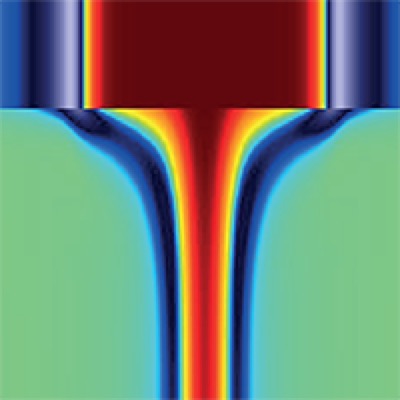Proximity effect between two superconductors
11/03/14 16:26
When a metal and a superconductor are interfaced through a good electrical contact, the electronic properties of the metal in the vicinity of the interface are altered. This phenomenon, known as the proximity effect, has been investigated since the early 1960s. What happens when the two materials in electrical contact are both superconductors and the scale of the contact is atomic? This question takes on renewed importance and interest, because of its relevance to a great variety of hybrid electronic systems based on novel low-dimensional or small-scale materials, as well as the much greater technical possibilities of studying such systems. So far, however, experimental studies that address this question have been scarce. In this paper, we report the first demonstration of a proximity effect between two superconductors connected through an atomic-scale junction, which is resolved in real space experimentally by a very-low-temperature scanning tunneling microscope and quantitatively explained theoretically.
The two superconductors in our system are a submicrometer island of single-crystal Pb and a crystalline monolayer Pb, with the former embedded in the latter. The electrical contact is provided by the atoms on the periphery of the island. Although both can be superconducting, the island becomes so at a much higher temperature than the monolayer, leaving a window of temperature within which the former is already superconducting and the latter still behaves like a normal metal. The density of electronic states in the vicinity of the interface, which we have mapped out with unprecedented 1-nm spatial and 30-meV energy resolutions, reveals a spectacular proximity effect in this temperature range: The region of induced superconductivity in the still metal-like Pb monolayer is many times bigger than what is typically seen in a normal nonsuperconducting metal. All our experimental observations have been quantitatively explained within the framework of the quasiclassical theory of superconductivity in the diffusive limit.

The two superconductors in our system are a submicrometer island of single-crystal Pb and a crystalline monolayer Pb, with the former embedded in the latter. The electrical contact is provided by the atoms on the periphery of the island. Although both can be superconducting, the island becomes so at a much higher temperature than the monolayer, leaving a window of temperature within which the former is already superconducting and the latter still behaves like a normal metal. The density of electronic states in the vicinity of the interface, which we have mapped out with unprecedented 1-nm spatial and 30-meV energy resolutions, reveals a spectacular proximity effect in this temperature range: The region of induced superconductivity in the still metal-like Pb monolayer is many times bigger than what is typically seen in a normal nonsuperconducting metal. All our experimental observations have been quantitatively explained within the framework of the quasiclassical theory of superconductivity in the diffusive limit.

